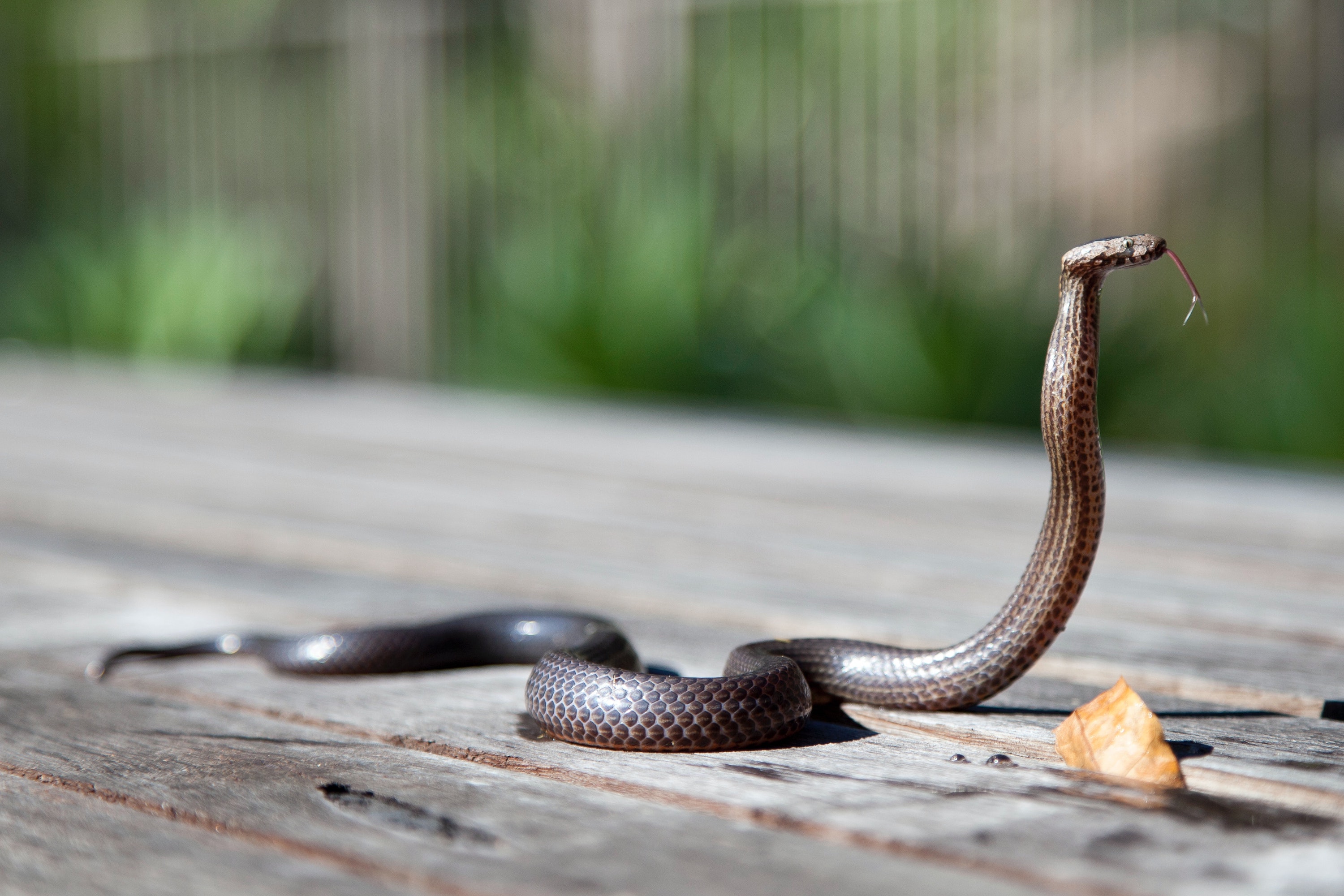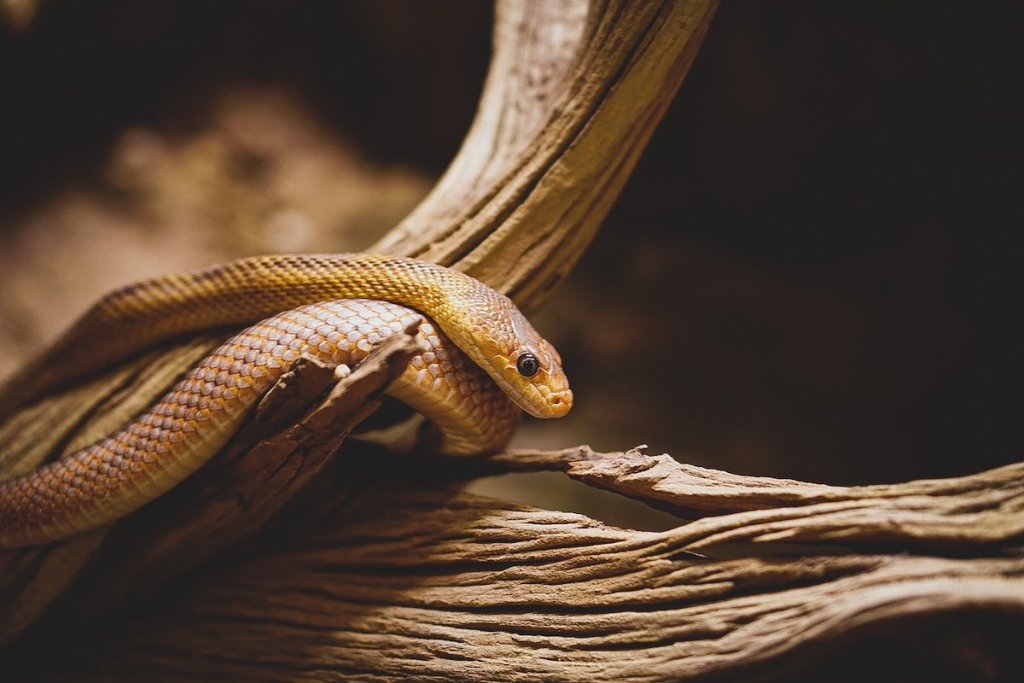Snakes are particularly known for their laziness; they’re just really chill. This makes them an excellent pet, and one that works well for someone with advanced animal knowledge but little desire to play with their companion. But at what point is your snake’s aloofness a problem, and at what point is too mellow not good? While you don’t want to treat your snake like a dog or a cat, you must ensure your reptilian friend has enough going on not to check out and get bored. Here’s how to interpret snake behavior.

Is my snake bored?
The truth is, probably not, though that doesn’t mean his lifestyle isn’t important to his well-being. Don’t think of your snake as a dog or a bird; he probably doesn’t want to learn tricks or play games like a warm-blooded animal. Instead, you should ensure that your slithering reptile has the proper habitat, which includes enrichment.
For example, a tree-dwelling snake should have some plants or wood in his enclosure for draping, and a burrowing creature needs deep substrate ready for him to dig down. Most species will love a hide that provides a place to retreat. So, to sum things up, your snake doesn’t think exactly as you do, but an improper tank will cause “boredom” and poor health.
How can I keep my snake entertained?
Let your snake out (in a controlled way)
Setting up the perfect housing goes a long way to keeping any pet happy, but that doesn’t mean your snake needs to spend all of their time there. Some snakes like to go out for slithers in the backyard, others enjoy swimming in the kiddie pool, and still a few want to sit on your shoulders as you go about your day.
Rearrange your snake’s habitat
Inside their home, you can mix it up now and then by rearranging the furniture and allowing her a new place to explore.
Engage your snake at mealtime
Lastly, try to bring some fun feeding into the equation. Live prey should only be given under very limited circumstances, mainly because you would be surprised how many reptile versus rodent battles wind up with the mouse on top. You don’t want a meal to take a bite out of your pet, so we do recommend you go the frozen route. Still, mealtime should involve some engagement.
What are some signs my snake is sick?
Don’t confuse boredom for illness. Your animal might have plenty to do but wind up looking a little off. That often means it’s time to go to the exotic vet, though you may find some ailments self-diagnosable. For example, stiff posture, as much as it seems innocent, often indicates a bacterial or viral infection.
Similarly, runny eyes, digestive issues, or bumps on the skin also reveal that something needs looking after. (That would likely be the case for any animal and should be a little intuitive.) One thing that applies essentially only to snakes is shedding. It seems odd, but you can learn a lot from how easily the outer derm comes off.

How do I know if my snake is sleeping?
Okay, before you take their zen as an immediate sign that your snake’s in mortal danger, first check that they’re not just asleep. One good way to tell is by looking at their tongue. You must have noticed that your little serpent almost constantly flicks their forked appendage since they use that for smell and therefore to experience the world around them. If your snake spends lots of time tasting the air normally but doesn’t bother for quite some time, they may well be asleep. However, mouth-breathing does sometimes indicate respiratory issues, so too much open jaw could show a problem in and of itself.
If your snake shows signs of too much calm, take a beat to try and find out the cause. They could be understimulated or asleep. Alternatively, it might indicate something more serious such as a sickness. When in doubt, call your veterinarian and talk it through with them. If your snake doesn’t move for a whole day, you will want to bring them in for a full workup. Lastly, remember that snakes digest their intermittent meals really slowly and you might see low activity around that time. That’s normal, and you’ll get used to his individual patterns quickly. Otherwise, keep your snake engaged with an interesting habitat and some extracurricular activities.
Editors' Recommendations
- What causes high pH in an aquarium? We’ll walk you through getting your tank levels in check
- Is my rabbit pregnant? 5 telltale signs you should know
- Best reptile pets: These are the 5 most affectionate reptiles you can welcome into your home
- Bunny care 101: If Easter inspires you to adopt a rabbit, read this first
- Are female betta fish worth it? Here’s why you should consider getting one of these pretty fish




